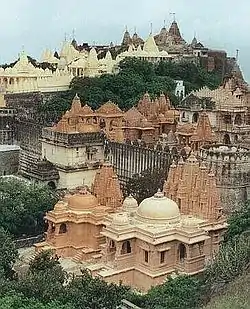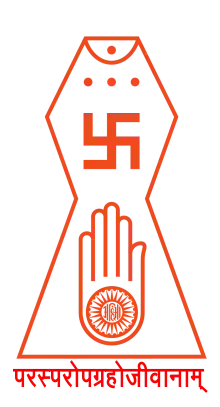Jainism in Gujarat
History
Jains believe that their 22nd Tirthankara (propagators of Jain religion) Neminath attained Moksha/ Nirvana on Girnar in Gujarat. Many other monks have also got attained Moksha in Gujarat; especially on the holy mountains of Girnar and Shatrunjaya. The Jain councils were held in Vallabhi c. 5th century CE.[2] Their canonical scriptures were written down during this council. King Vanaraja Chavda (c. 720-780 CE) of the Chavda dynasty was brought up by a Jain monk named Shilaguna Suri.
Jain temples are found in Gujarat from as early as the 6th and 7th centuries CE. It was patronized by the Chaulukyas and Chavadas.[3] Dhank Caves (3rd-7th century CE) in Rajkot district has Jain Tirthankara carvings. Northern Gujarat became a principle center of Jainism in the 13th century CE.[4]
The earliest known Old Gujarati text Bharat-Bahubali Ras, was written by a Jain monk. Of the most important people in Gujarat's Jain history were the Acharya Hemachandra Suri and his pupil, the Chaulukya ruler Kumarapala.
Major Centers
Major ancient Jain centers include:
Photo gallery
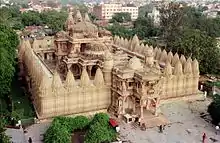
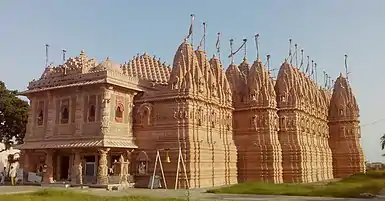
 Samovsaran Mandir, Palitana Teerth
Samovsaran Mandir, Palitana Teerth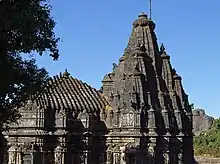
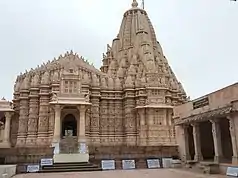
 Vanki - Patri Jain Mandir, Kutch
Vanki - Patri Jain Mandir, Kutch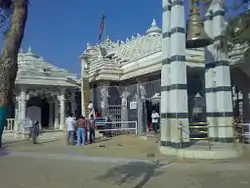

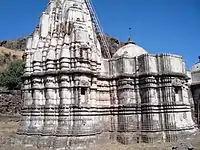
 Jain temple in Polo forest
Jain temple in Polo forest
See also
Notes
- Glasenapp, Helmuth von (1999). Jainism. ISBN 9788120813762. Retrieved 21 January 2016.
- Shah, Natubhai (2004). Jainism. ISBN 9788120819382. Retrieved 21 January 2016.
- Wink, André (1991). Al-Hind the Making of the Indo-Islamic World. ISBN 9004102361. Retrieved 21 January 2016.
- Prakash, Om (2005). Cultural History of India. ISBN 9788122415872. Retrieved 21 January 2016.
References
- Glasenapp, Helmuth Von (1999), Jainism: An Indian Religion of Salvation, Delhi: Motilal Banarsidass, ISBN 81-208-1376-6
